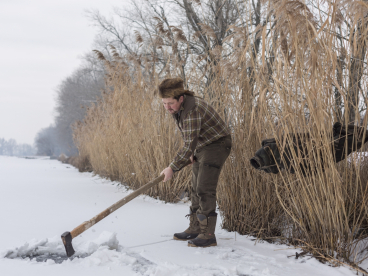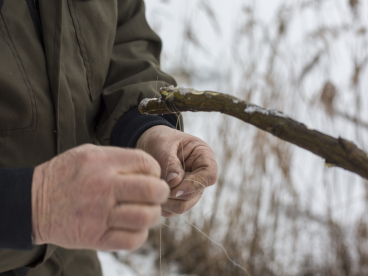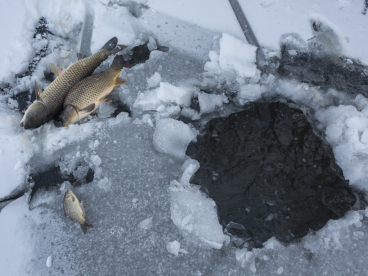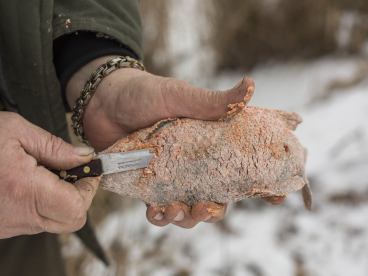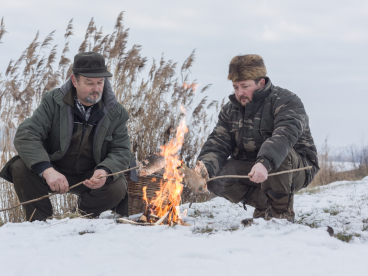The people of Csallóköz were always known as skilful fishermen. How could they not, when the island was criss-crossed with the rich veins of the Danube channels, which virtually offered up their extravagant offerings on a plate. Those who discovered the secrets of the water and the paths the fish took could make a killing all year round. The real secrets were handed down from father to son and the locals tried to learn from childhood on the tricks of the trade. It was not difficult to find a suitable place, thanks to the Danube’s rich system of branch waters the fish could come to the house virtually all year round.
In long-lasting cold the “dead waters”, or dead channels were the first to freeze. But this did not stop the locals from fishing. When the water was covered with an armour of solid ice, they cut a hole in it and fished through that. First it was necessary to find the best place to cut the hole. For in winter the fish go dormant, that is they go to the bottom of the water. They ensconce themselves in a pit or hole where they spend the best part of winter without feeding or moving. Since the old people fished most times with a tápli, they had to cut a hole large enough for the large implement. Tápli is a 3-3.5 m long pole (generally made of hazelnut wood), to the end of which a so-called star, formerly made of wood, now it is a glass rod is attached. A 2.2mx2.2m net is bound between them. When the hole is cut, the fisherman assembles the tápli and lowers it into the water, pushes it a little to the side, then in a little while he pulls up the net. He continues this process until enough fish are caught in the net. Meanwhile the net gets soaked, so the fishermen had plenty to do until he had caught a sufficient number of fish.
There is another somewhat more modern method of ice-fishing. For this you do not need more than a good stick, string, cork, and a fish hook. You need to cut a much smaller hole. The best thing for this is an axe with a long handle, which gives greater force to the axe. It is also safer. As the fishermen can hit the ice from a longer distance, so it is less likely to break beneath his feet.
The hole is always carefully marked, a smaller sheaf of reeds are cut on the shore and are placed alongside the hole. The hole freezes over, but the reeds show where it was to those who come later.



